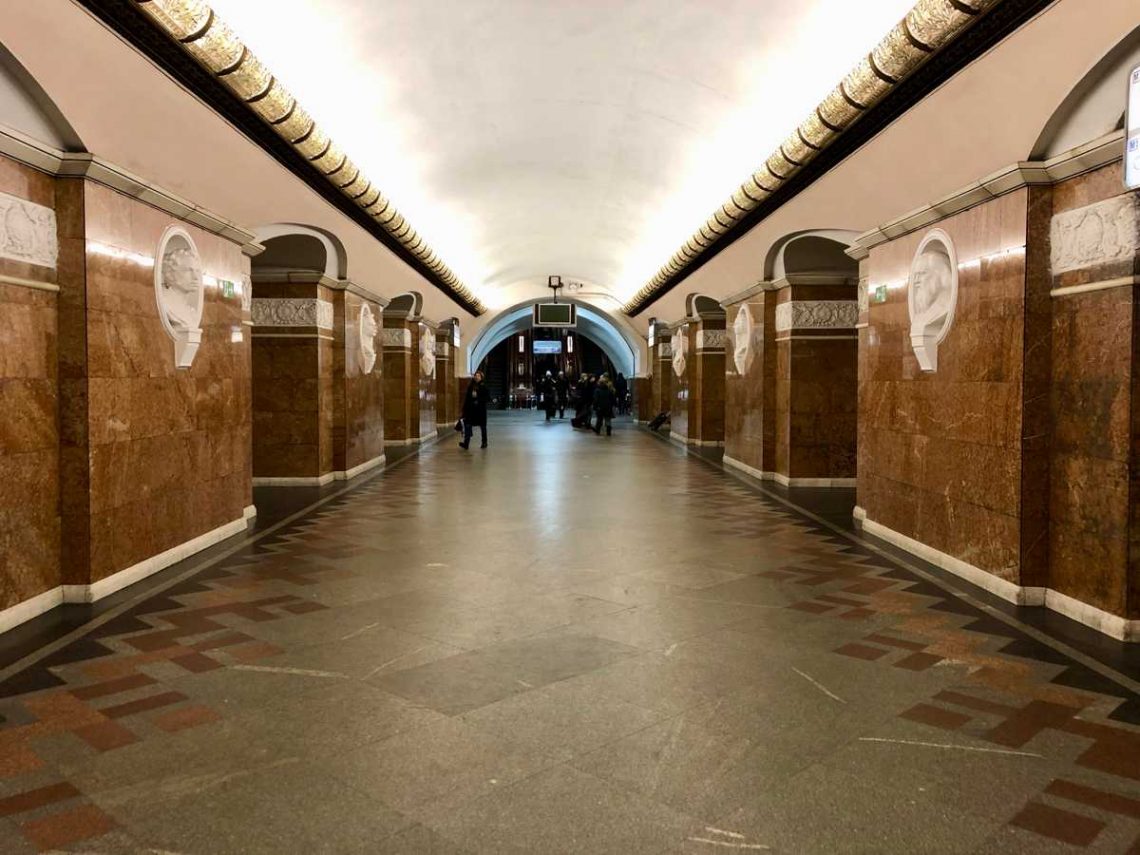
Kiev metro: How to use it, and the stations you MUST visit!
Kiev, capital city of Ukraine, is a bustling metropolis with plenty to see and do. But how do you get around the city and make the most of your visit? Luckily, the Kiev metro is one of the greatest in the world – cheap, easy to use and with a wealth of beautiful stations to explore.
The Kyiv metro was first opened in 1960, and is modelled after the great Moscow metro system – not surprising considering both networks were created during the period of the Soviet Union. Today, the city has 3 metro lines and 52 stations, and is used by well over a million passengers every day.
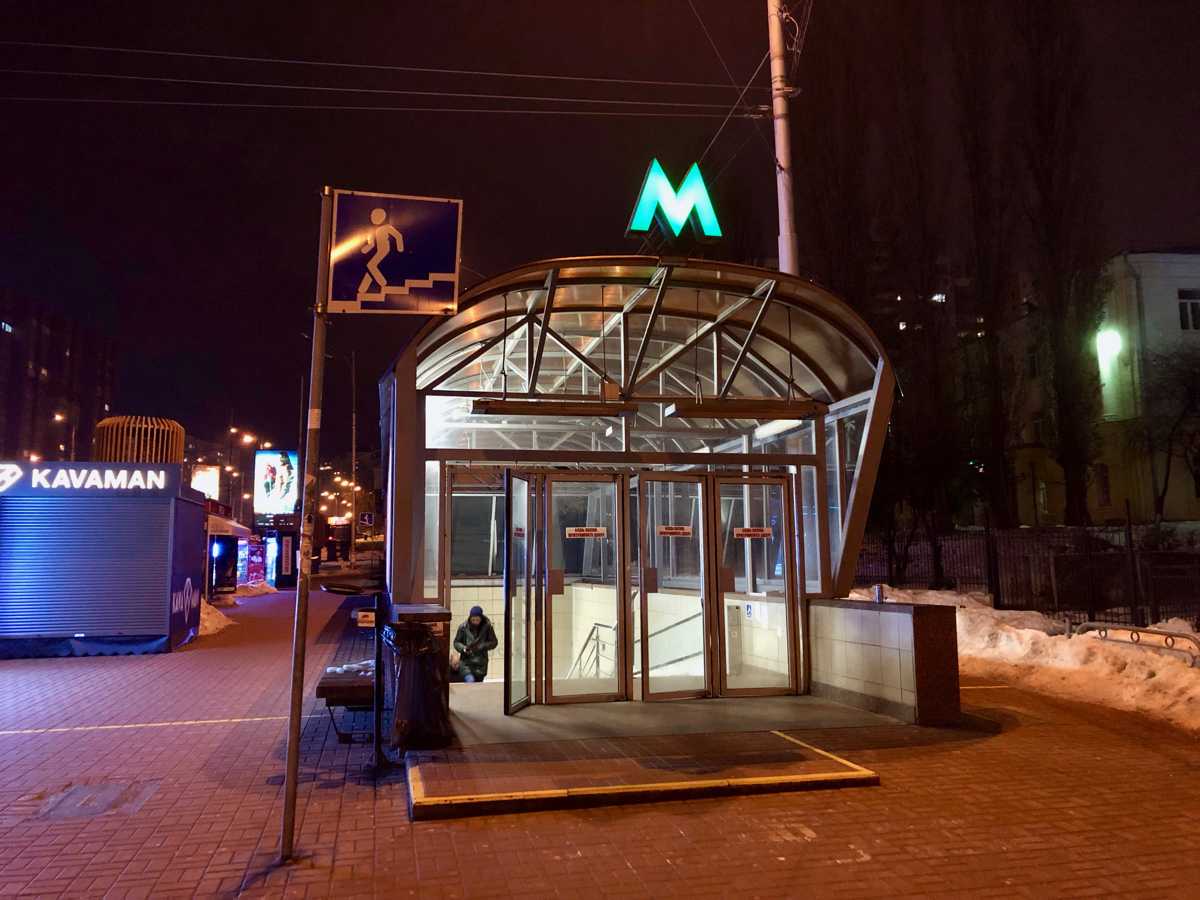
How do I identify Kiev’s metro stations?
Finding a metro station couldn’t be easier – every station is marked with a green letter M, normally illuminated at night. Unlike many cities, Kiev’s metro stations are often imposing buildings in their own right. Most maps of the city will mark the stations, and they can easily be searched on Google Maps and other navigation tools.
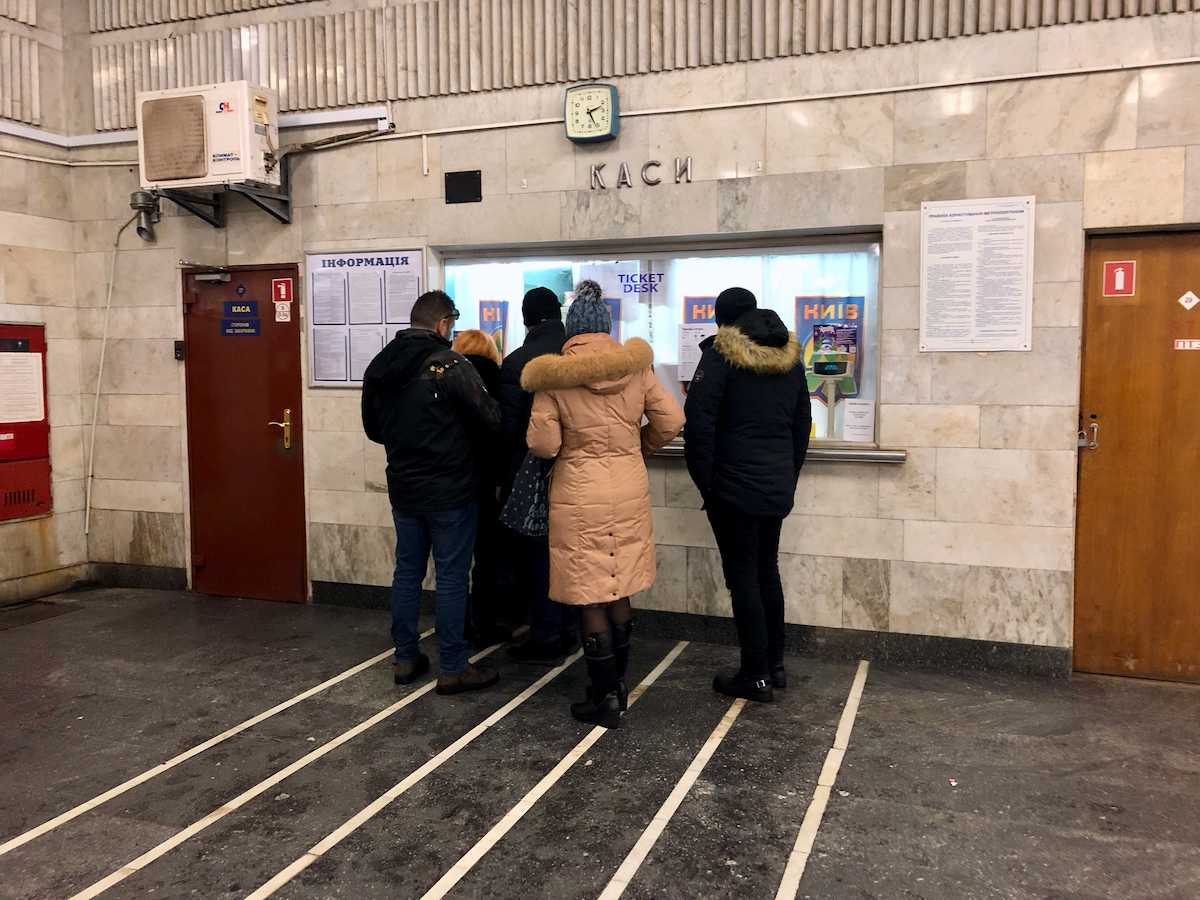
How much does it cost to ride the Kiev metro?
How do I buy a ticket?
The cost of living in Kiev is low by European standards (at least for visitors), and at the time of writing, Kiev has possibly the cheapest metro network that I have ever used. A mere 8 hryvnia (UAH, Ukraine’s unit of currency) or $0.30 will buy you a token that will take you anywhere in the city.
Because the cost is so low, there is really no point doing anything other than buying single trip tokens. Every station has a ticket desk; simply approach the clerk and ask for the number you require. Most will speak at least enough English for basic numbers; if not, holding up a few fingers will do the trick. You will be given the requisite number of green plastic tokens; I recommend buying a few at the same time for simplicity.
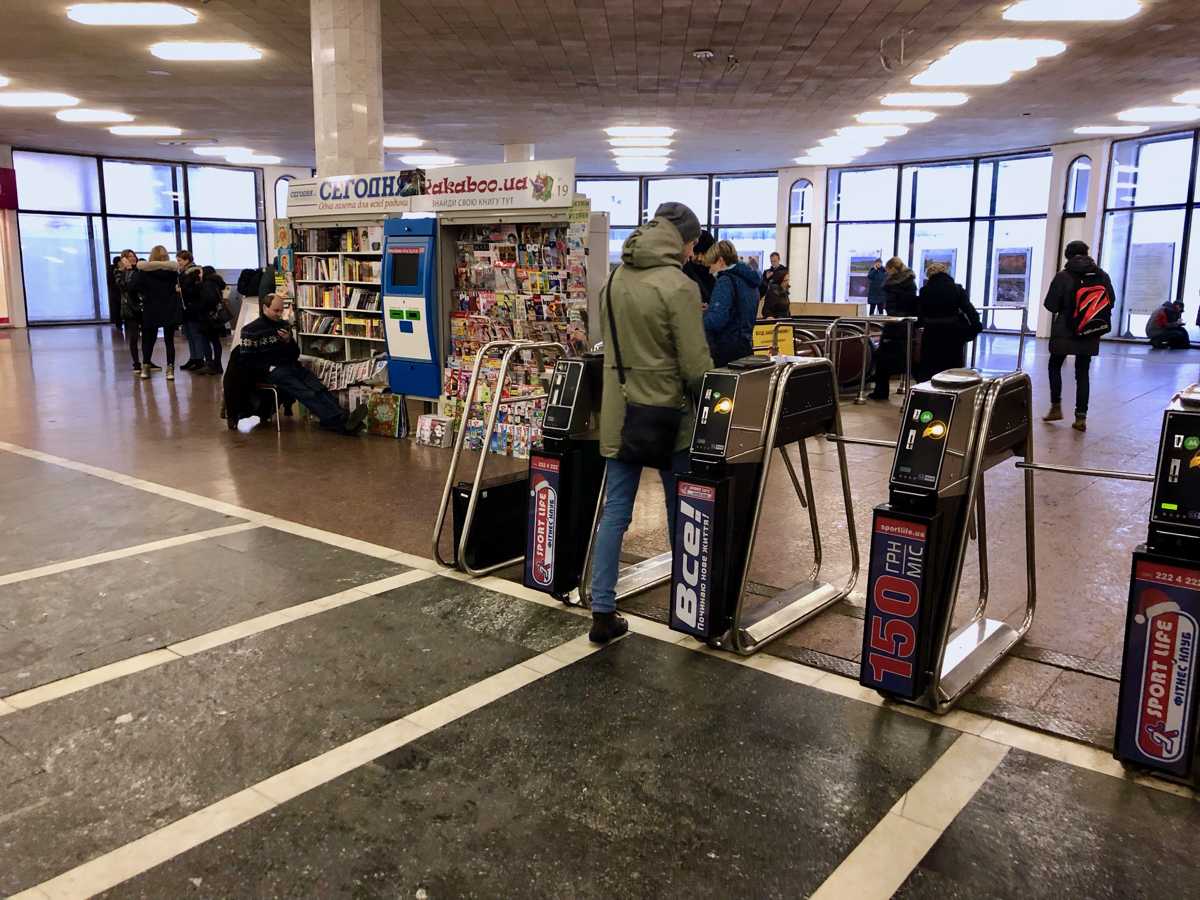
Using the metro
To enter the metro, simply drop one token into the slot in the entry barrier, and push through the turnstile.
At the majority of stations, you will then need to take an escalator down to the platform level. Be warned – some escalators move faster than you will be used to, but that’s part of the fun! You will take either one or two escalators to reach the platform.
At platform level, check for the platform you need for your direction of travel. Unless you can read Cyrillic characters, you will probably need to go onto the platform itself where there will be information in English; if you can’t see your destination, try the other platform! Most stations have digital display boards at the end of the platform counting down the minutes to the next train.
Because Kiev’s metro is so cheap, it can be very popular most of the day. During quiet periods you may be able to get a seat, but be prepared to stand and, if necessary, squeeze into a busy carriage, particular in the city centre. Don’t worry, Ukrainians tend to like their personal space and won’t stand any closer than they absolutely have to. But it goes without saying that you should keep your valuables secure in a busy carriage; hold bags and backpacks in front of you, and never leave money, phone etc in a back pocket.
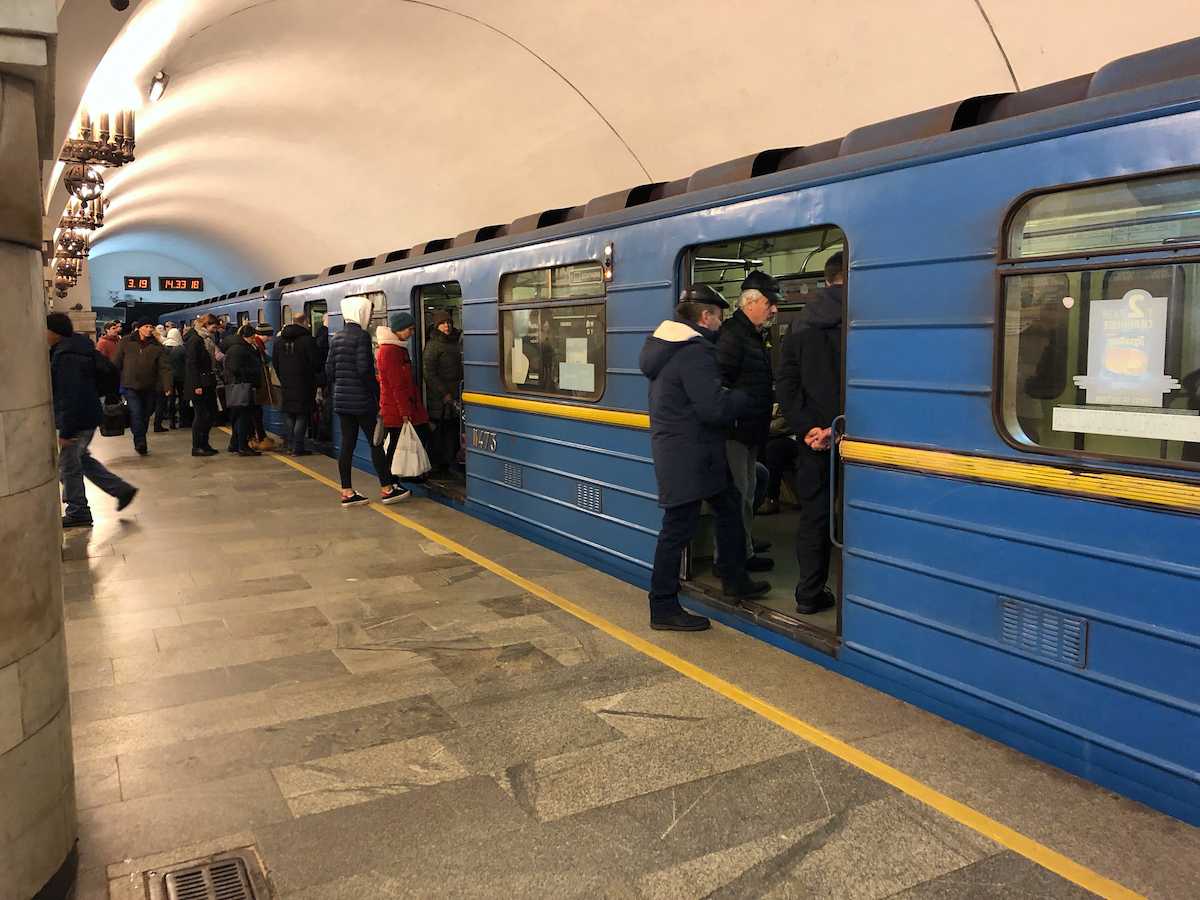
Changing lines
With 3 lines, sometimes you will need to change from one to the other. To do this, exit your train at the interchange station and look for the signs pointing you to the connecting line. They will be marked in English.
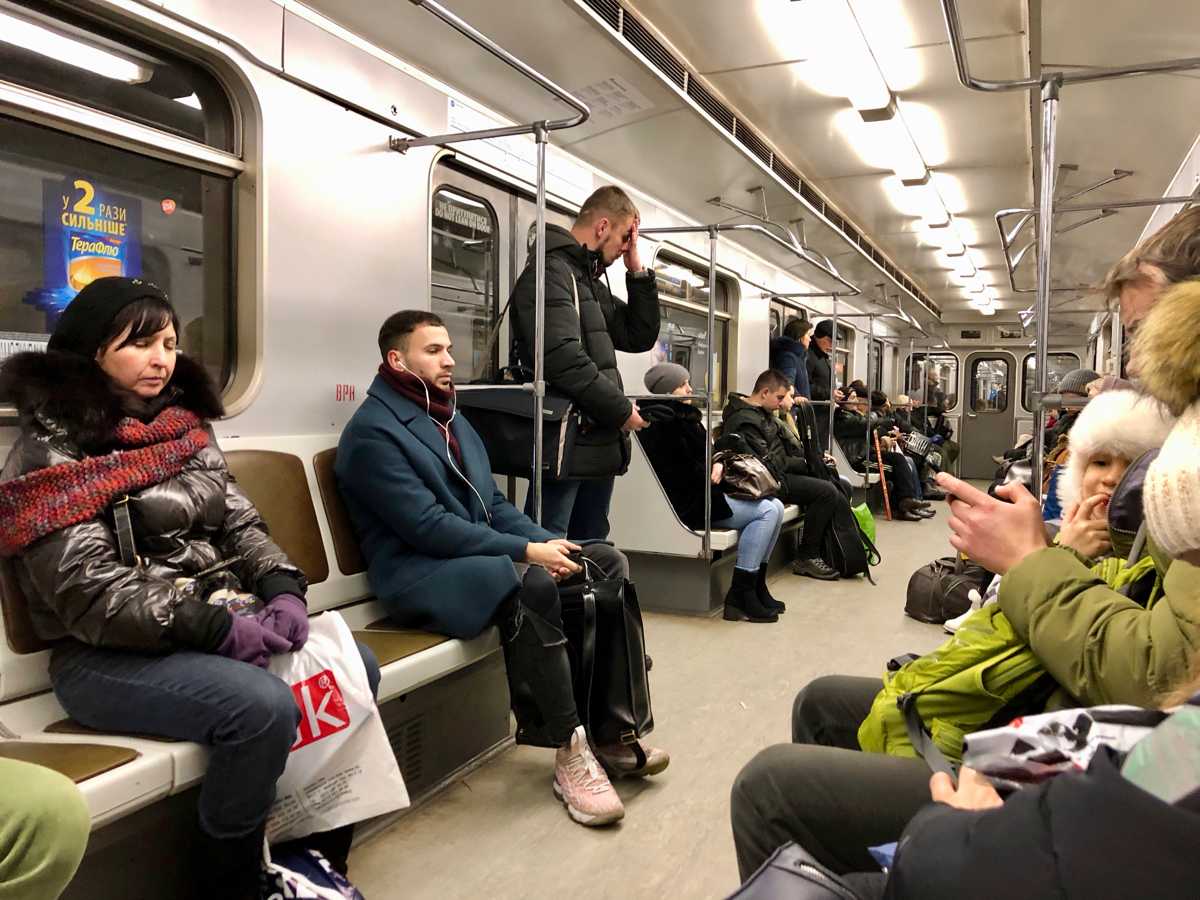
Arriving at your destination
Finding your destination is pretty easy: many trains display the next station on digital displays inside the carriage, and all trains I used announced the next stop over a tannoy system. Even if you don’t speak the language, listen out for the station name. A map of the route is also displayed inside the carriage; it helps if you know how many stops you need to travel so you can count them down.
When you arrive at your stop, leave the carriage and head for the escalators; the word Exit will be displayed in English. Ride the escalator back to the surface, and leave through the barrier – you won’t need another token. Many stations have multiple exits, so if you know which way you need to go, look out for the street name. Otherwise, just head for daylight and figure it out once you get there! Metro stations also double as underpasses for major roads, so if you find yourself 4 lanes of traffic from where you need to be, just head back inside and make your way to the right side of the road via the tunnels.
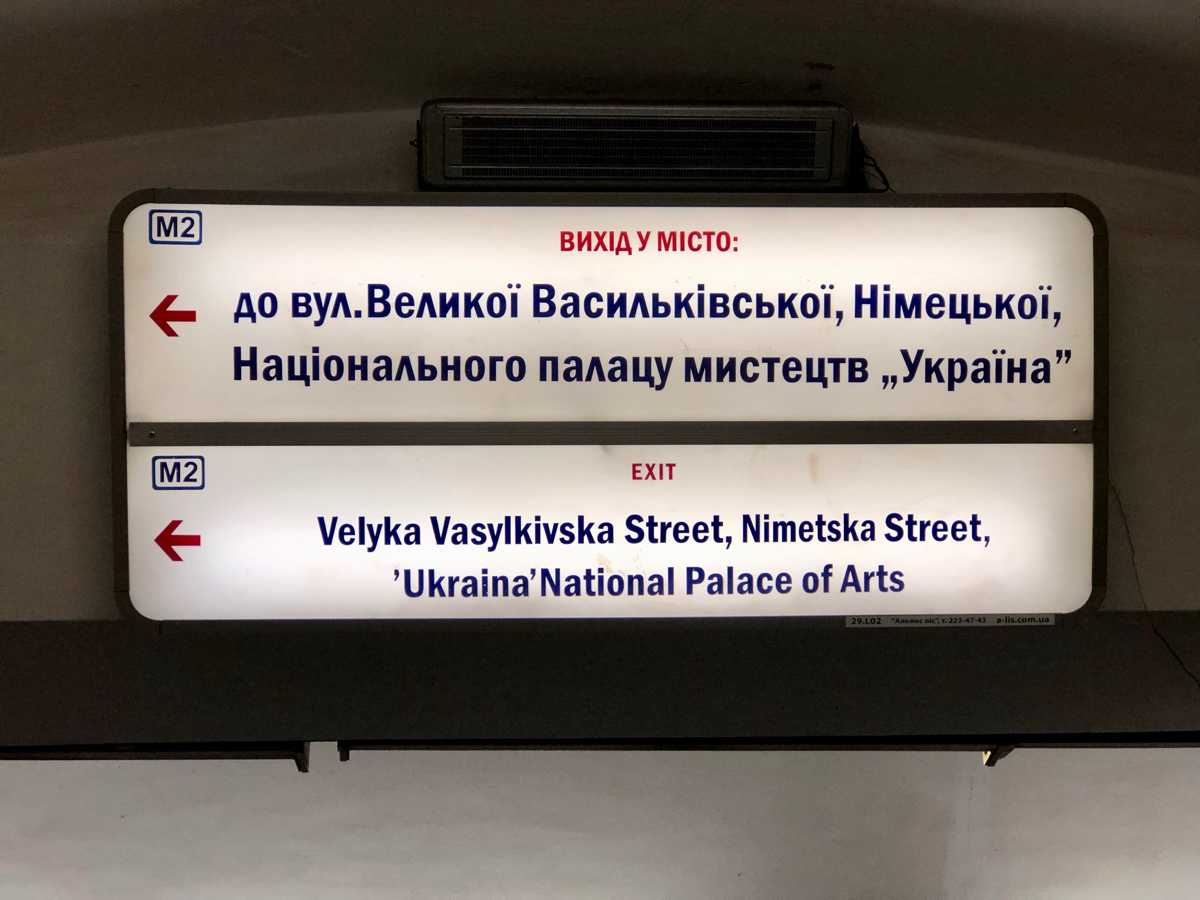
The top Kyiv metro stations to visit
With some of the most beautiful stations in the world, a self-guided Kiev metro tour is a great way to spend an hour or two – and one of the cheapest things to do in the city!
There are a number of beautiful stations to discover.
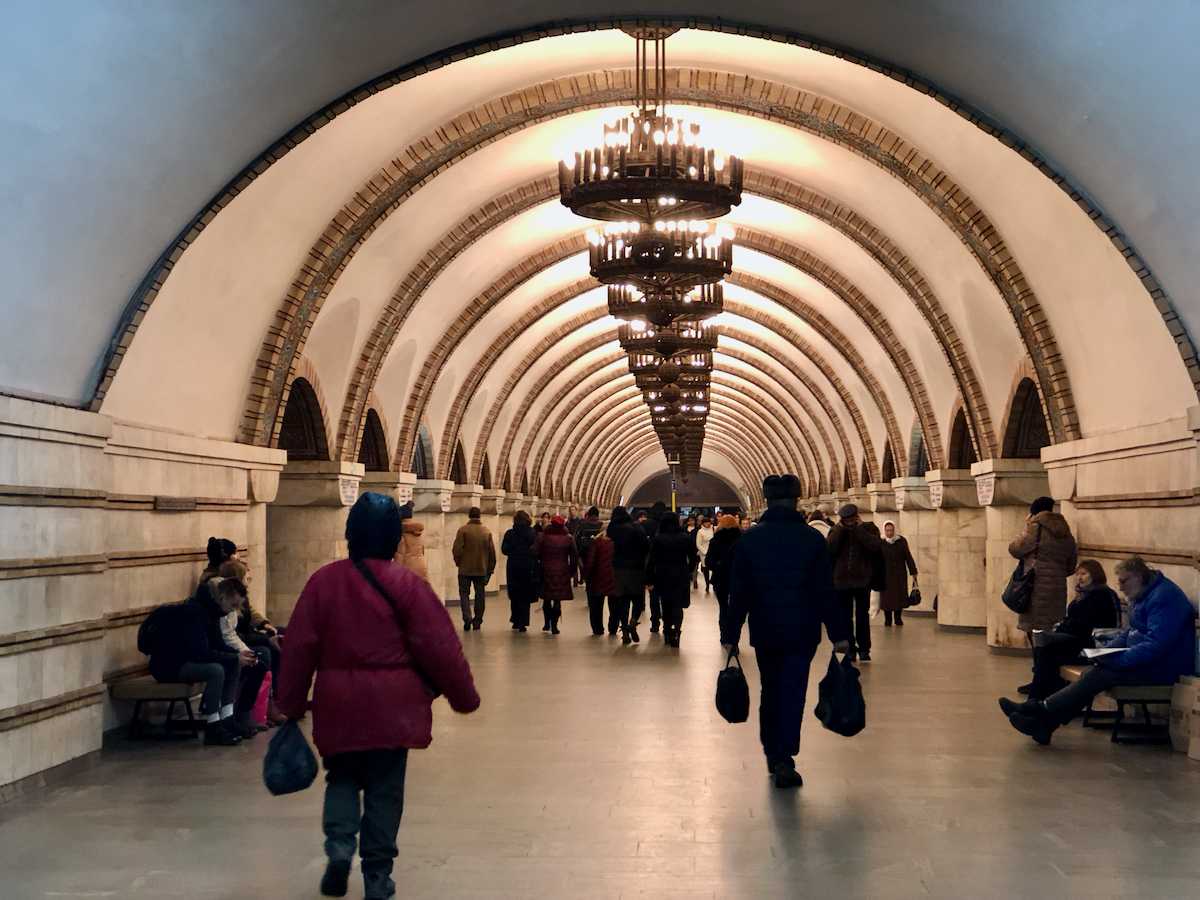
Zoloti Vorota
Frequently appearing on the list of the world’s most beautiful stations, Zoloti Vorota is in the heart of the city centre on the green metro line. It can also be reached from its connecting station, Teatralna.
With its ironwork chandeliers and soaring mosaic archways, it’s definitely a station not to be missed.
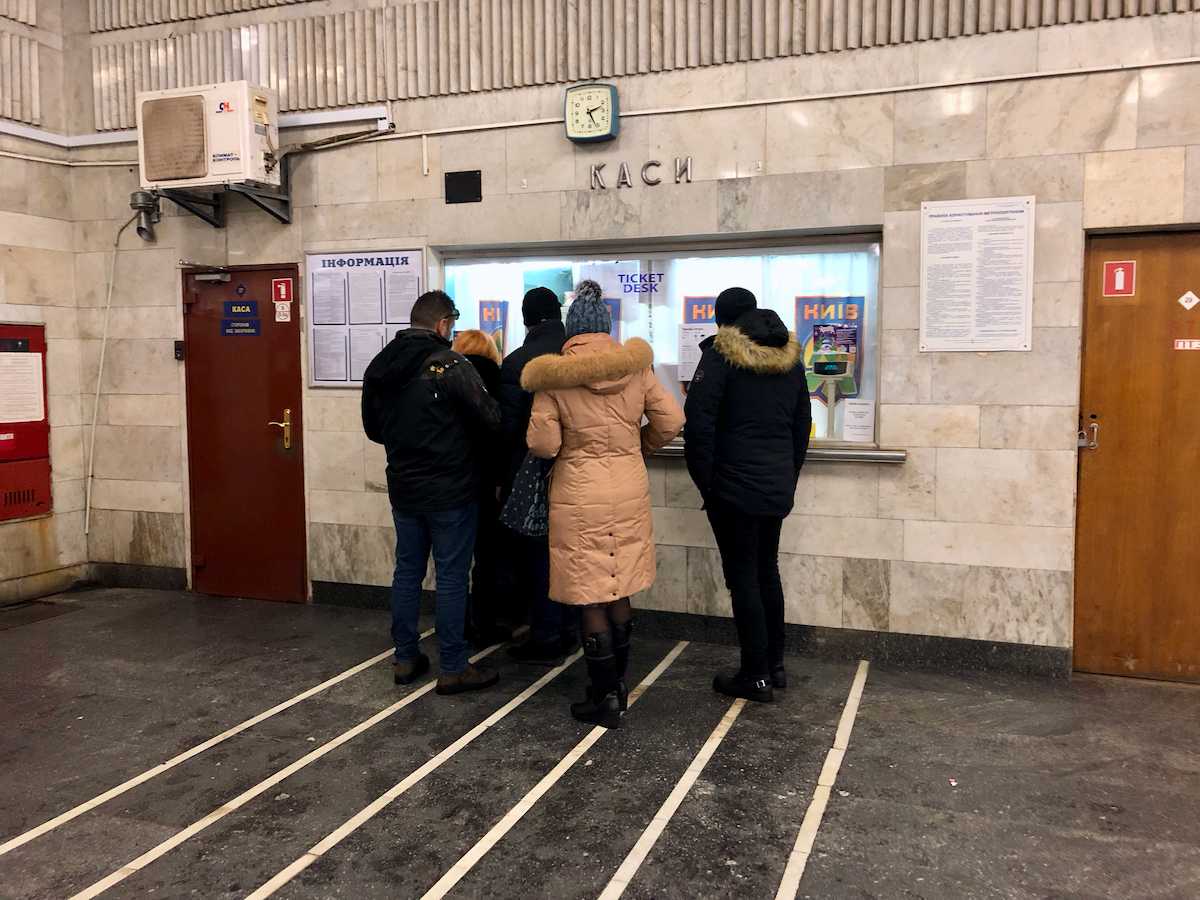
Teatralna
Easy to reach from its connecting station Zoloti Vorota, Teatralna is the station of theatre! Its clean, modern lines are colourful, with a display of an auditorium on its end wall and seasonal displays along the archways from time to time. Teatralna is on the red line.
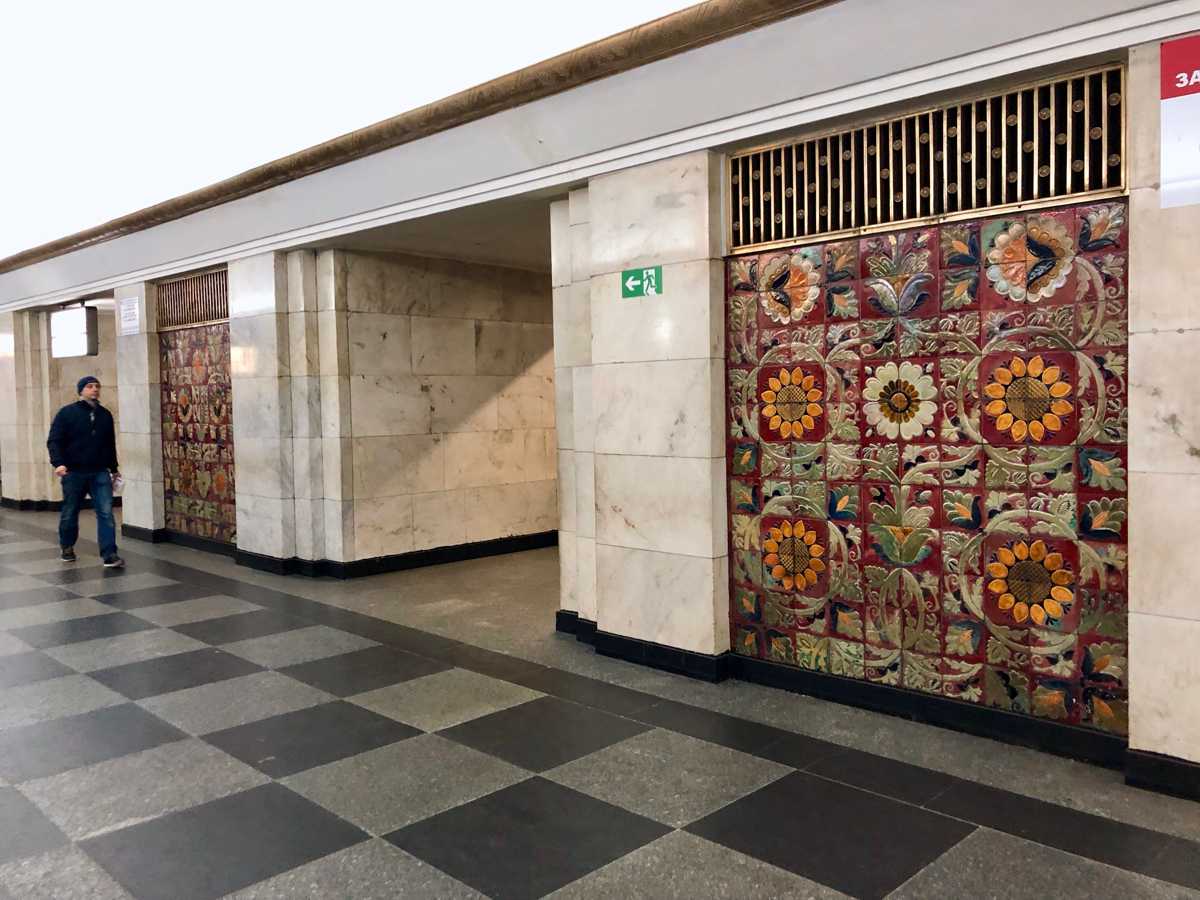
Kreschatyk
Kreshchatyk, on the red line and connecting with Maidan Nezalezhnosti (Independence Square), is the station of Ukrainain folk heritage, as evidenced by its beautiful traditional tiling.
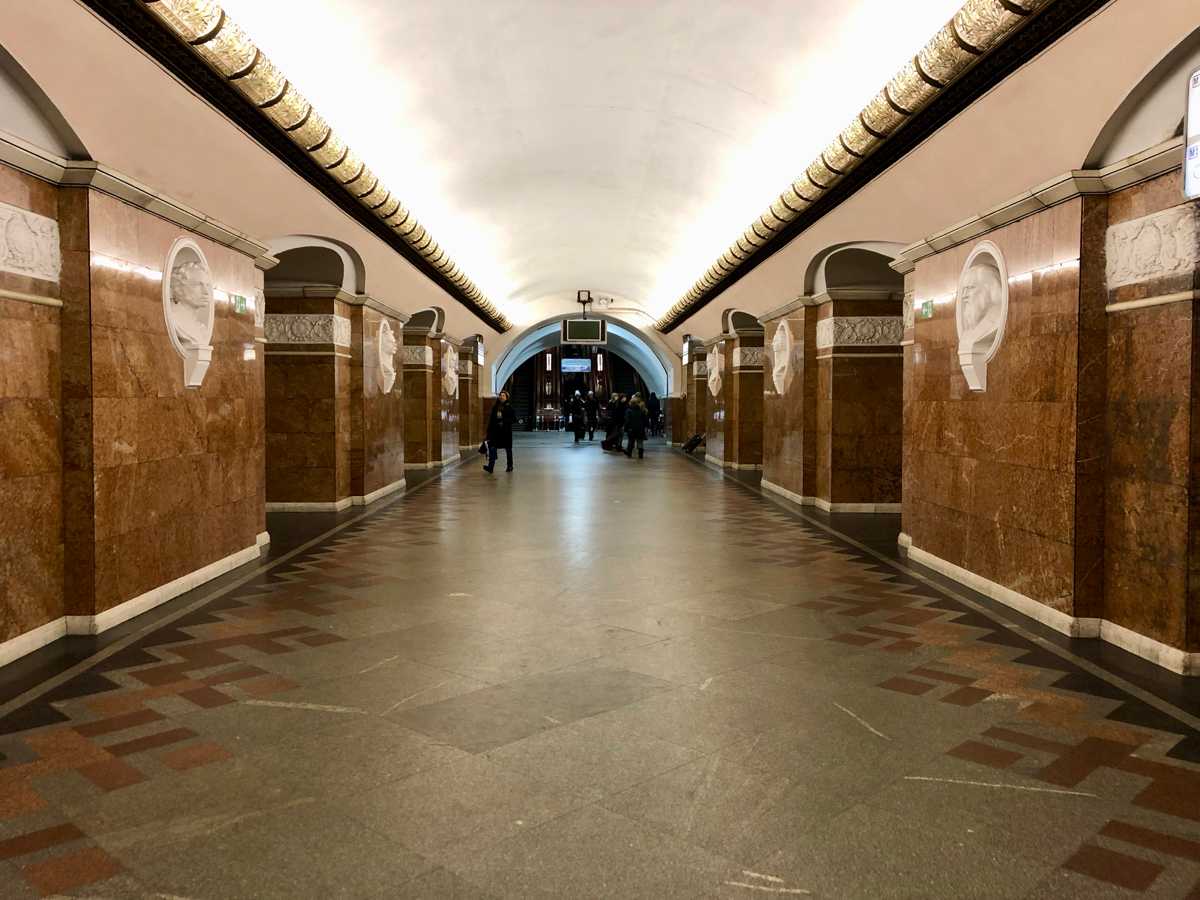
Universitet
An elegant station on the red line, Universitet has beautiful marbled archways lined with statues of prominent Ukrainian poets and scientists. It is one of the oldest stations on the network, opened in 1960, and is also one of the deeper stations, with a particularly grand entranceway and two escalators required to reach the platform.
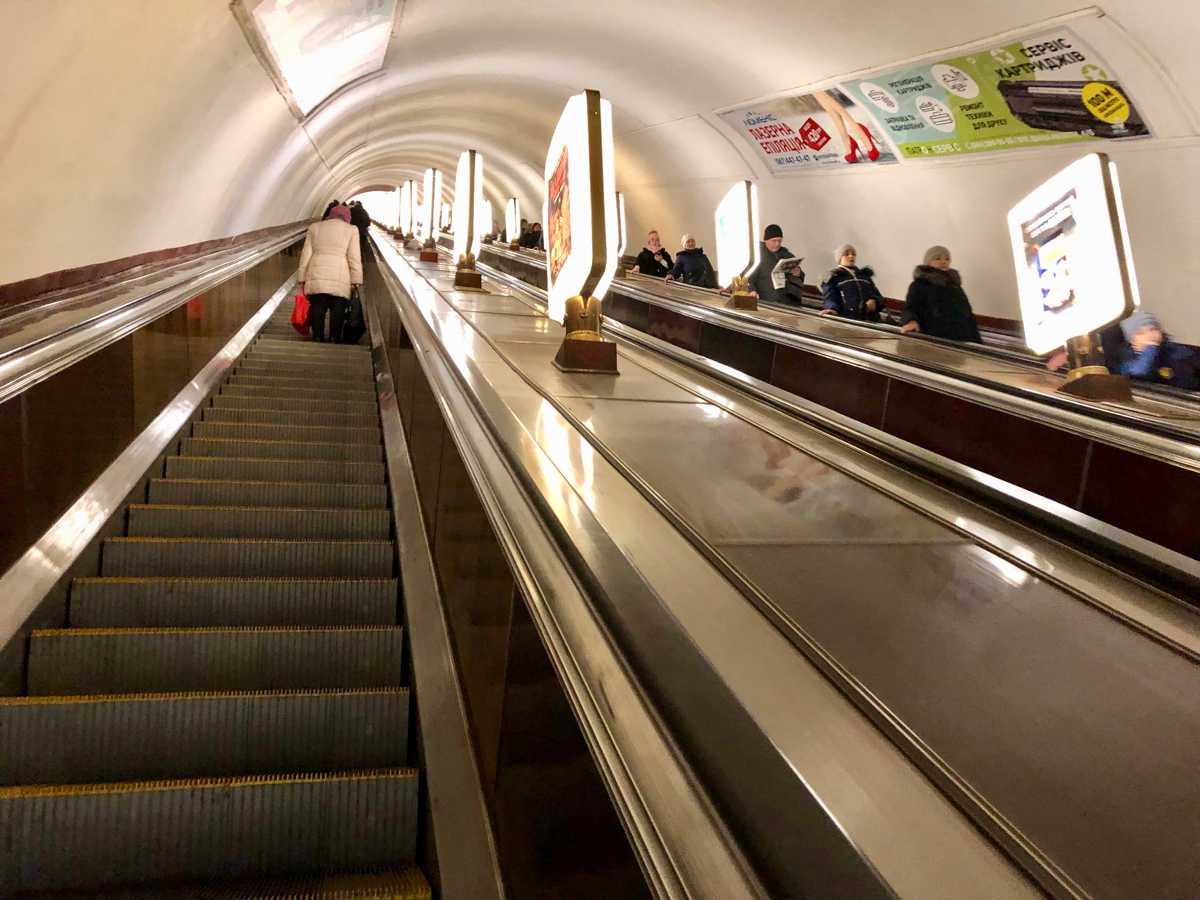
Arsenalna
Arsenalna’s fame comes not so much from how it looks, as how deep it is – it is officially the deepest metro station in the world. At 105m below the surface, it’s a long way down; in fact, it took me 4.5 minutes to travel from platform level to the exit barrier!
Arsenalna station is on the red line.

Olimpiiska
One of the more modern stations on the Kiev transport network, Olimpiiska is a beauty. Lined with chandeliers designed to look like bicycle wheels, the end wall of the station has a magnificent display of Olympic rings.
The station was opened in 1980 but looks much newer. It was named after the nearby Olympic sports stadium and is located on the blue line.
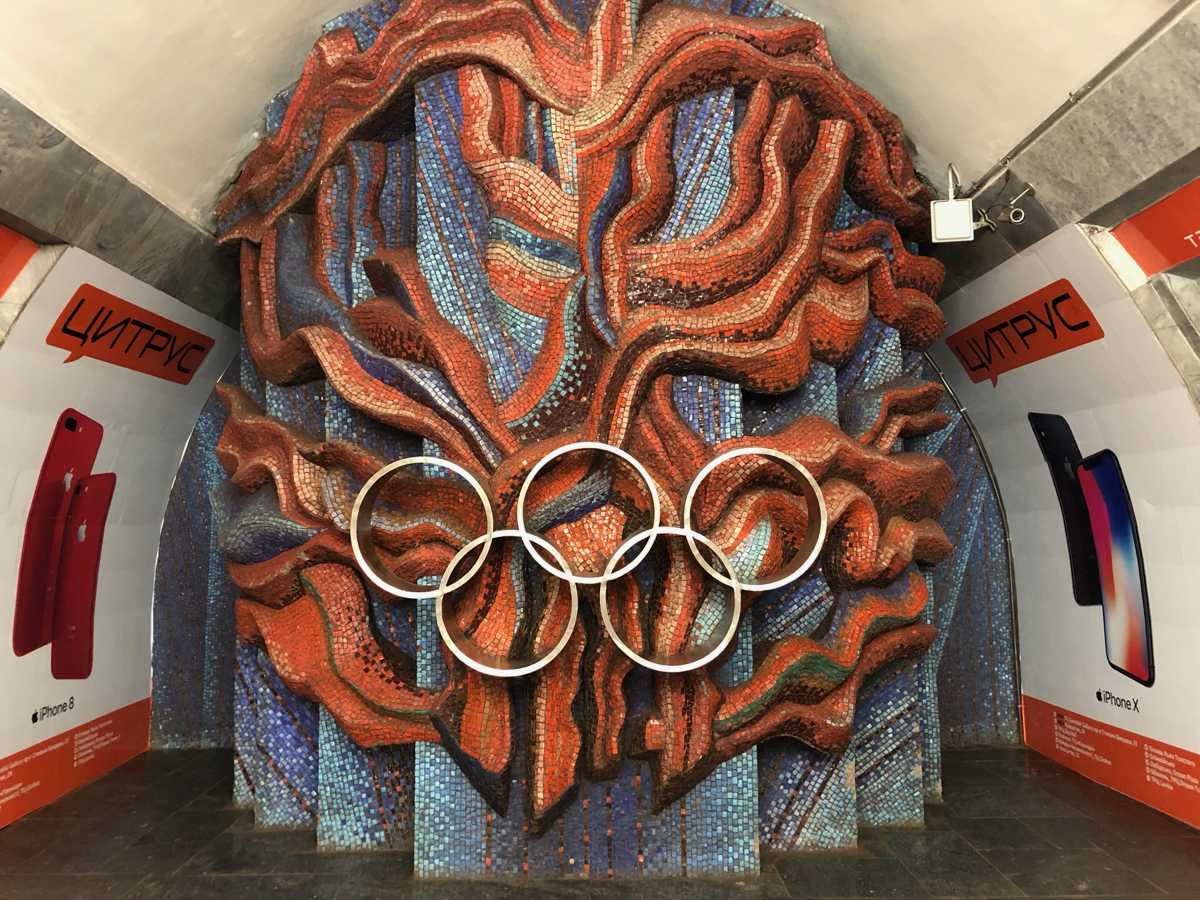
Palats “Ukraina”
On the blue line, Palats “Ukraina” station has striking tubular chandeliers and beautiful red mosaic tiling, giving it a modern, theatrical look.
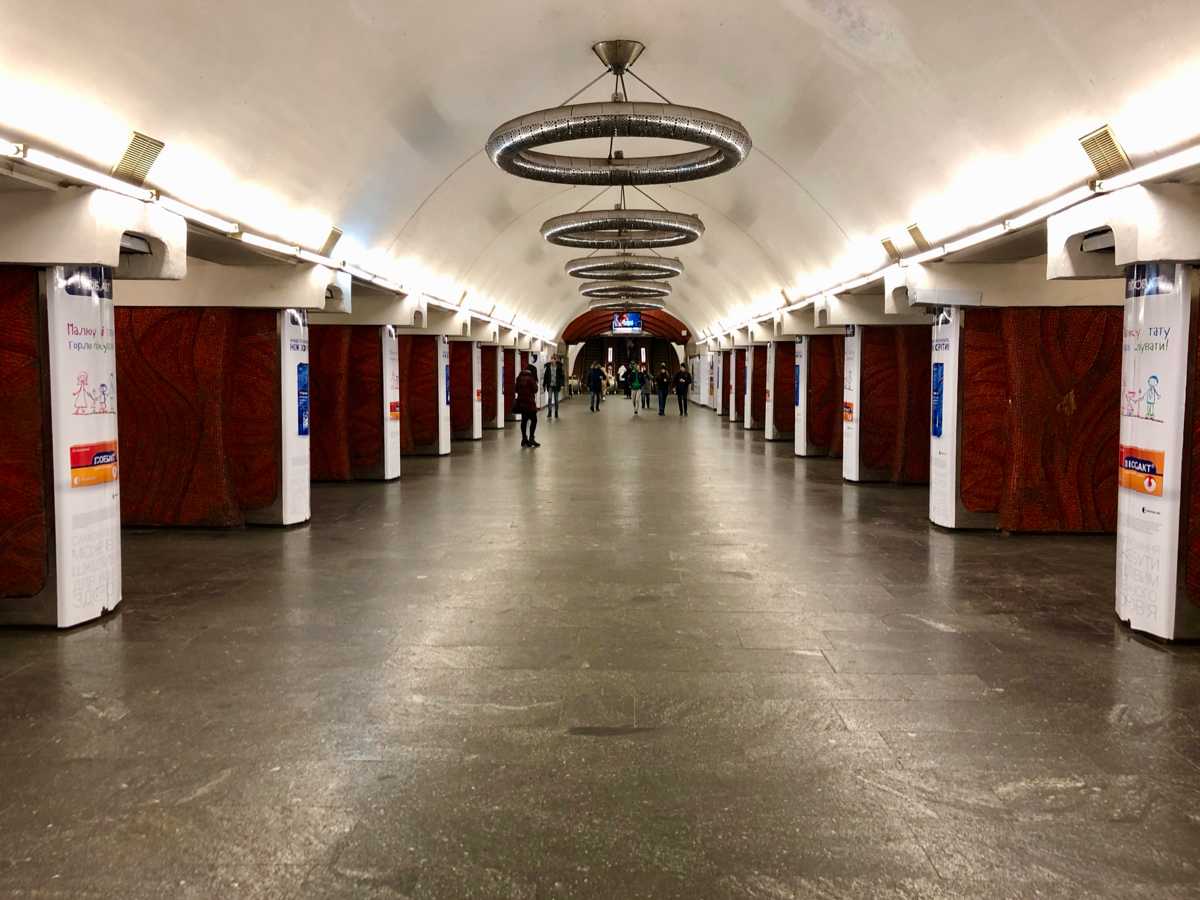
Demiivska
One of my favourites, Demiivska on the blue line is a modern station opened in 2010, and is the stopping-off point for the main Kiev bus station. The soaring main platform concourse is lined with pillars which branch out into cones of light near the ceiling, while the layout feels airy and spacious.
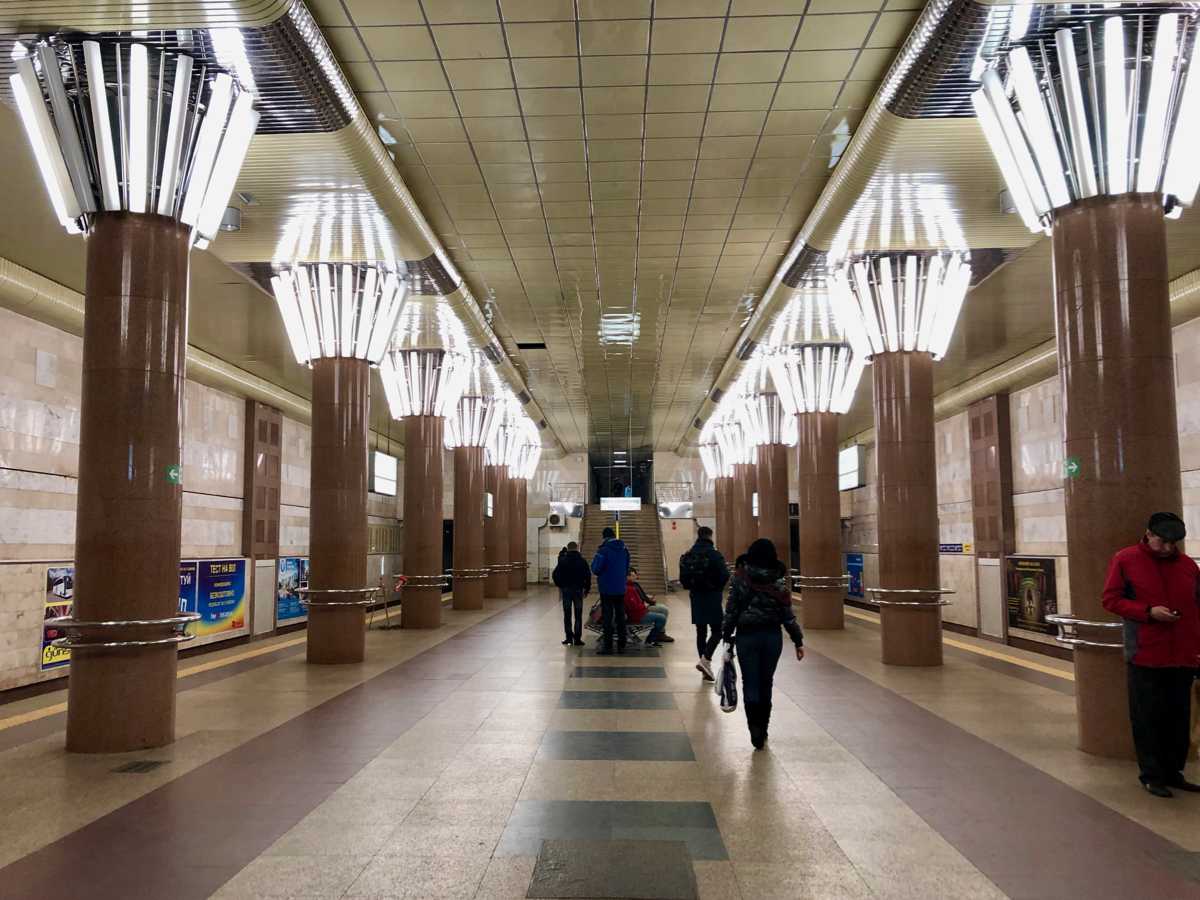
Kiev metro map and apps
A Kiev subway map can be found on the UrbanRail website.

Other Kiev sightseeing options
If you are looking for things to do on your visit to Ukraine’s capital city, check out these other posts for the best Kiev tourist attractions as well as options further afield!
- Chernobyl tours from Kiev: Is Chernobyl safe to visit?
- Kiev metro: How to use it, and the stations you MUST visit!
- What to do in Kiev in winter: The perfect 3-day itinerary
- The best day trips from Kiev: Visit Uman, central Ukraine
Want to discover more of Eastern Europe? Check out these posts for more inspiration!
- Chernobyl tours from Kiev: Is Chernobyl safe to visit?
- Kiev metro: How to use it, and the stations you MUST visit!
- What to do in Kiev in winter: The perfect 3-day itinerary
- The best day trips from Kiev: Visit Uman, central Ukraine
- One day in Tirana: Taking the Kotor to Tirana bus
- What to do in Sarajevo: The abandoned Sarajevo bobsled track
- Top things to do in Sarajevo, Bosnia & Herzegovina
- 4 perfect half day trips from Mostar, Bosnia
- Getting around Warsaw by public transport
- Top things to do in Warsaw: The perfect Warsaw itinerary



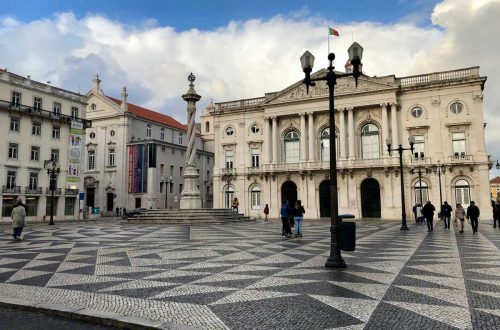
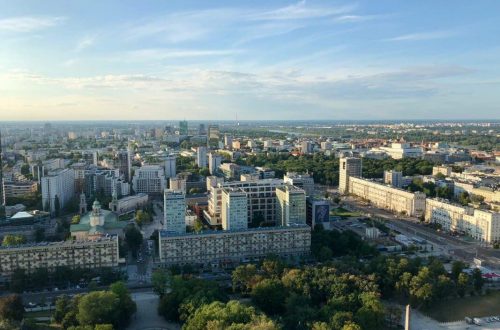
9 Comments
Keri
What a useful guide – thanks for sharing! 🙂
Jill Bowdery
Thanks Keri, glad you found it helpful!
Sophie Pearce
This is an AMAZING post. I’m heading to Kiev in April and cannot wait to explore. Some of these metro stations have given me some gram inspiration. I went to Russia and it was similar with the stations being in Cyrillic and no English so it’s a bit of a gamble where you get on and off. Excellent and informative post and will keep this for when I go to Kiev. I’m excited to read more. Thanks for sharing.
Sophie | http://thirdeyetraveller.com
Jill Bowdery
The metro stations are definitely similar to Russia in many ways (there is even the lady sitting in the booth at the bottom of the escalators, haha!). You’ll have a wonderful time in Kiev, it’s beautiful and so interesting. Have a great trip when the time comes!
Ben Foster
I’m heading to Kiev tomorrow, thank you for the info, so helpful! Carry on inspiring Jill!
Thanks again.
Ben.
Jill Bowdery
Thanks Ben, so happy to have helped! Enjoy Kiev!
Kat
Really helpful info, thanks Jill!
Jill Bowdery
Thanks Kat!
Andy Ross
I’m off to Kiev and Chernobyl on the 28th September for 5 days, I found the information very helpful as I’m going to get the train from Boryspil airport to the main train station Pasazhyrs’kyy and then the No.1 metro to Khreshchatyk. The pics of Khreshchatyk station looks amazing. I’m staying near to Maidan (Independence Square) and was a bit worried about using the Metro due to the language barrier but your info has made me more confident